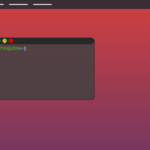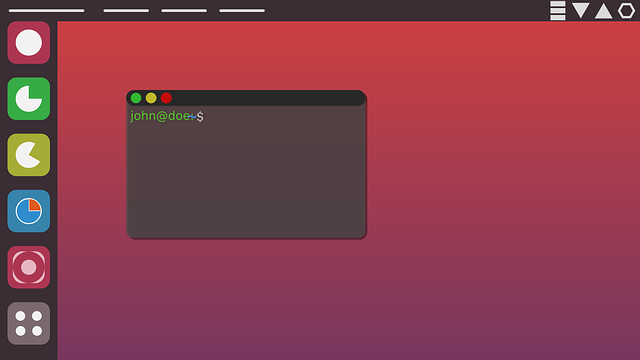Medical Records Management on Linux platforms ensures a secure and customizable boot process that is essential for healthcare environments managing sensitive data. Utilizing GRUB as the primary bootloader, systems can select different kernels or enter rescue modes to maintain system integrity and protect data, which is critical in light of regulations like HIPAA. The boot process is further enhanced with automation through scripts and tools like Upstart or systemd, allowing for pre-boot checks such as data validation, encryption verification, and backup routines. This tailored approach ensures compliance with regulatory standards while providing a secure and dependable framework from the initial boot. Linux's adaptability in medical records management is highlighted by its ability to balance robust security with high performance, enabling easy updates without compromising system stability. The boot customization, including kernel optimizations for database performance and setting up read-only file systems, reduces risks of unauthorized data access and ensures swift retrieval and processing of patient information. Kickstart files or cloud-init are used to configure hardware components and network settings automatically during boot-up, minimizing potential errors and ensuring secure remote database connections that expedite system readiness. This comprehensive approach to the Linux boot process in Medical Records Management systems underscores its importance in upholding high standards of data security while maintaining operational efficiency.
Exploring the intricacies of a customizable boot process unlocks a realm of flexibility, particularly within specialized domains such as Medical Records Management (MRM) on Linux. This article delves into the transformative potential of leveraging Linux for enhanced MRM systems, emphasizing the critical roles of GRUB and kernel parameters. By integrating these components with MRM, organizations can achieve tailored boot experiences that streamline data handling and security measures. We will examine strategic approaches to boot customization, ensuring a robust foundation for MRM on Linux.
- Leveraging Linux for Enhanced Flexibility in Customizable Boot Processes
- The Role of GRUB and Kernel Parameters in Medical Records Management Systems
- Integrating Medical Records Management with Linux: A Deep Dive into Boot Customization Strategies
Leveraging Linux for Enhanced Flexibility in Customizable Boot Processes

The boot process is a critical component of any operating system, serving as the gateway from power-off to full system functionality. In the realm of Linux, this process offers unparalleled flexibility, allowing for customization that caters to diverse needs across various environments, including medical records management. Leveraging Linux for enhanced flexibility in boot processes is not just a technical choice but an operational necessity for organizations dealing with sensitive data like medical records. The Linux bootloader, GRUB (GRand Unified Bootloader), offers users the ability to select different kernels or initiate rescue modes at startup. This feature is particularly beneficial in medical environments where system integrity and data protection are paramount. By implementing custom scripts or using tools like Upstart or systemd, system administrators can tailor the boot sequence to perform specific tasks such as data validation, encryption checks, or even automated backup routines before full access to the system is granted. This ensures that medical records management systems are not only compliant with regulations but also operate within a secure and reliable framework from the moment the system powers on. The customizable nature of Linux boot processes allows healthcare organizations to maintain an optimal balance between performance and security, ensuring that patient data remains confidential while facilitating efficient access for authorized personnel. Furthermore, the ability to modify and update the boot process without affecting the core system stability is a testament to the robustness and adaptability of Linux in mission-critical applications like medical records management.
The Role of GRUB and Kernel Parameters in Medical Records Management Systems

In the realm of Medical Records Management Systems, the boot process plays a pivotal role in ensuring system stability and performance. A key component of this process is GRUB, the GNU GRand Unified Bootloader. GRUB provides an interface for users to select different operating systems or kernel parameters at startup. Its customizability allows healthcare organizations to tailor the boot sequence to their specific needs, such as loading a Linux kernel with optimized parameters for handling medical data. This customization can include setting up specific kernel flags that enhance security and reliability, which are paramount when dealing with sensitive patient information. For instance, implementing read-only file systems or enabling strict access controls from the boot phase can mitigate risks associated with unauthorized data access.
Furthermore, within Linux-based Medical Records Management Systems, kernel parameters can be fine-tuned to optimize performance for database operations that underpin medical record management. Parameters like ‘elevator’ and ‘IO scheduling’ can be configured to prioritize I/O operations for databases containing medical records, ensuring faster retrieval and processing of patient data. This level of control over the system’s boot and runtime parameters is crucial for maintaining the integrity and availability of medical records, which are governed by stringent regulations such as HIPAA in the United States. By leveraging the flexibility offered by GRUB and kernel tuning, healthcare providers can maintain compliance with these regulations while also optimizing their systems for efficiency and security.
Integrating Medical Records Management with Linux: A Deep Dive into Boot Customization Strategies

Integrating Medical Records Management (MRM) systems with Linux operating systems can significantly enhance data security, flexibility, and performance for healthcare providers. A key aspect of this integration is customizing the Linux boot process to streamline access to MRM applications upon system startup. Custom boot parameters allow for the loading of necessary kernel modules, which in turn enable secure and efficient connections to medical records databases. This ensures that healthcare professionals can quickly and safely access patient data, which is crucial for timely diagnosis and treatment decisions.
To achieve a seamless integration, Linux boot customization strategies focus on automating the process with kickstart files or cloud-init for virtual environments. These strategies facilitate the preloading of drivers required for hardware components, such as biometric scanners or specialized medical peripherals. Additionally, implementing scripts during the boot sequence can automatically configure network settings, ensuring secure connections to remote databases. This level of automation not only accelerates the system’s readiness but also reduces the risk of human error during critical patient care moments. By tailoring the Linux boot process to prioritize MRM applications, healthcare facilities can maintain high standards of data security and operational efficiency.
Medical Records Management with Linux presents a unique opportunity for tailored boot processes, enhancing operational flexibility and security. By utilizing Linux’s robust tools like GRUB and fine-tuning kernel parameters, healthcare organizations can customize their systems to meet specific demands. This article has explored the intricacies of integrating Medical Records Management with Linux through in-depth discussions on boot customization strategies, underscoring the potential for a more efficient and responsive system. As this exploration makes clear, the benefits of such an approach are manifold, offering not only improved performance but also increased security and compliance with industry standards. In adopting these practices, medical institutions can ensure their digital infrastructure is both resilient and adaptable to future needs.


























